Last July we spent a week in the Triglav national park, in what is called the Julian Alps. It was created in 1961 in Tito’s time when Yugoslavia still existed. The park borders the Italian and Austrian Alps and may be considered, together with the Kamnik Alps, as the end of the alpine mountain range. The name Triglav comes from the highest summit (2864 metres) and means “three heads”.
We went there to do some mild hillwalking which proved not mild but quite strenuous at times. Being featherbrained with no new SD card available, I realised the Ricoh GRD 4 was the only option as a photographic tool. Yet it proved to be a reliable companion during the walks and the weight of the camera was easily forgotten in the outer pocket of the rucksack.
Velika Planina
Whatever guidebook you read, Velika Planina appears everywhere. It’s a plateau you reach by first taking a cable car and then a chairlift. You may think the plateau will be crowded, considering at all the cars parked below, but the area is vast enough to accommodate everyone.
Slovenian families take their kids up there for the day. It’s not a strenuous walk and the cable car and chairlift save the effort of the main climb up a zigzag forest path with no vista at all. It is one of the very few remaining examples of an Alpine shepherd villages — if not the only one . Once you leave the chairlift and after a really mild short ascent, you discover the village with the Alps in the distance.
The path descends slowly among flowers and cows straggling all over the plateau. The village is made of wooden cabins with paths running between the huts. Most of the houses were burnt during the Second World War, but have since then been rebuilt traditionally. The walk round the village and meandering between the huts and cows takes about two to three hours, including lunch with traditional cheese and meat you can have in some of the huts.
Some farmers still milk the cows the old way and, if you feel like it, you may spend the night in one of the huts. The cheese is a must-try. Once you’re down again the road from the cable car leads you to the source of the Kamniska Brstrica with its crystal-clear water, something you’ll see in every river in the Slovenian Alps. The Carniolan honey bee is to be seen in any valley as well.
Bled and the Vintgar gorge
Lake Bled and Lake Bohinj were Tito’s favourite holiday destination. The villages are on the eastern side of the national park and concentrate the majority of tourists. If you don’t like crowds, traffic jams and so on just avoid the place.
We just stayed overnight to visit the Vintgar Gorge early the next day. We had a really early start for a holiday, but by 8.30 in the morning you already had to pay five euros to park the car and another twenty to enter the gorge. We were a bit cross, but it was well worth the hassle.
The path runs along the gorge, with wooden walkways, for a mile. Noise from the few people is covered by the sound of the rapids and waterfalls along the river. The mist was slowly lifting by the time we entered the gorge. In the calm sections, you can spot many trout (sorry, anglers, but fishing is forbidden).
Trenta
This is the first village coming down from the Vrsic pass from Kranjska Gora. If you wish to stay in a quiet village at the hub of many paths, this is the place and that’s what we did (Anze Apartment highly recommended for the kindness of the owner). The village boasts the only national park house with a small museum, an organic market on Saturdays in the summer and a small shop that sells delicious apple Strüdel (with cinnamon of course).
There are still a few traditional houses. The sunrises and sunsets in the mountains around were really magnificent. For people who like kayaking, Bovec or Tolmin might be better destinations but you’ll lose the quietness of the place.
The Soca trail
This was the first hiking trail to be created in the national park. It runs along the river, from the source to Bovec 25 kilometres downstream. Starting from Trenta, it will take you more than two hours to reach the source.
The path meanders on both side of the river, runs through woods, passes an alpine botanical garden and the statue of Julius Kugy, the first alpinist to climb Mount Triglav. It then crosses the road and leads you to the source of the Soca, although the path is not well indicated in that last section.
You can access the source only by means of a very narrow and rocky ridge which, very fortunately, is furnished with a simple steel-wire handrail to keep you on the not-so-straight but decidedly narrow.
The other part of the trail is mostly downhill (some 20 kilometres one way) but you can get a bus in Bovec or
It’s a wonderful walk but, unfortunately, you get very little access to water taps on the way and a good three litres of water was necessary to complete that part of the trail. The colours of the river are really amazing and having a picnic on the way, with the sound of birds singing and the water gurgling is pure enjoyment.
Krnsko Jezero
Don’t ask me to pronounce the name, I can’t. This popular walk starts from the end of the Lepena valley, some ten Slovenian kilometres from Trenta. The path goes up regularly in a forest on a steep zigzagging path. The later is quite uncomfortable as tree roots and rocks stud the path all the way up to the pass (sturdy and high mountain hiking boots are recommended).
On reaching the top, you can access a mountain refuge that provides a welcome break before going to the lake or climbing mount Krn, one of the summits that can be reached from the mountain refuge. A path then leads takes you on a 15-minute walk to Krnsko (lake) Jezero. It is a special piece of water because it is the largest high-altitude lake in Slovenia.
Flowers
Walking on mountain paths, surrounded by flowers, is always a pleasure and the GRD 4 proved very handy with its 10mm macro mode.
More articles by Jean Perenet recounting his travels in Europe and Asia
Subscribe to the Macfilos mailing list to receive one message at 8 pm London time from Monday to Friday with links to our latest articles. Your address will remain confidential and will not be used for any other purpose. You may unsubscribe at any time.






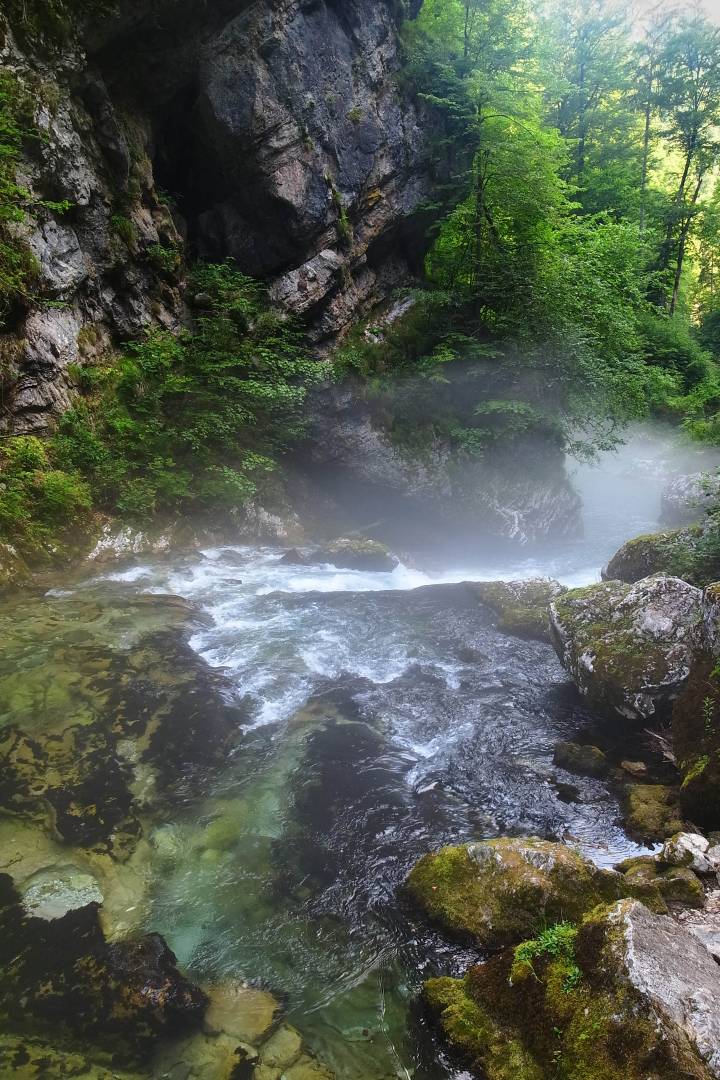

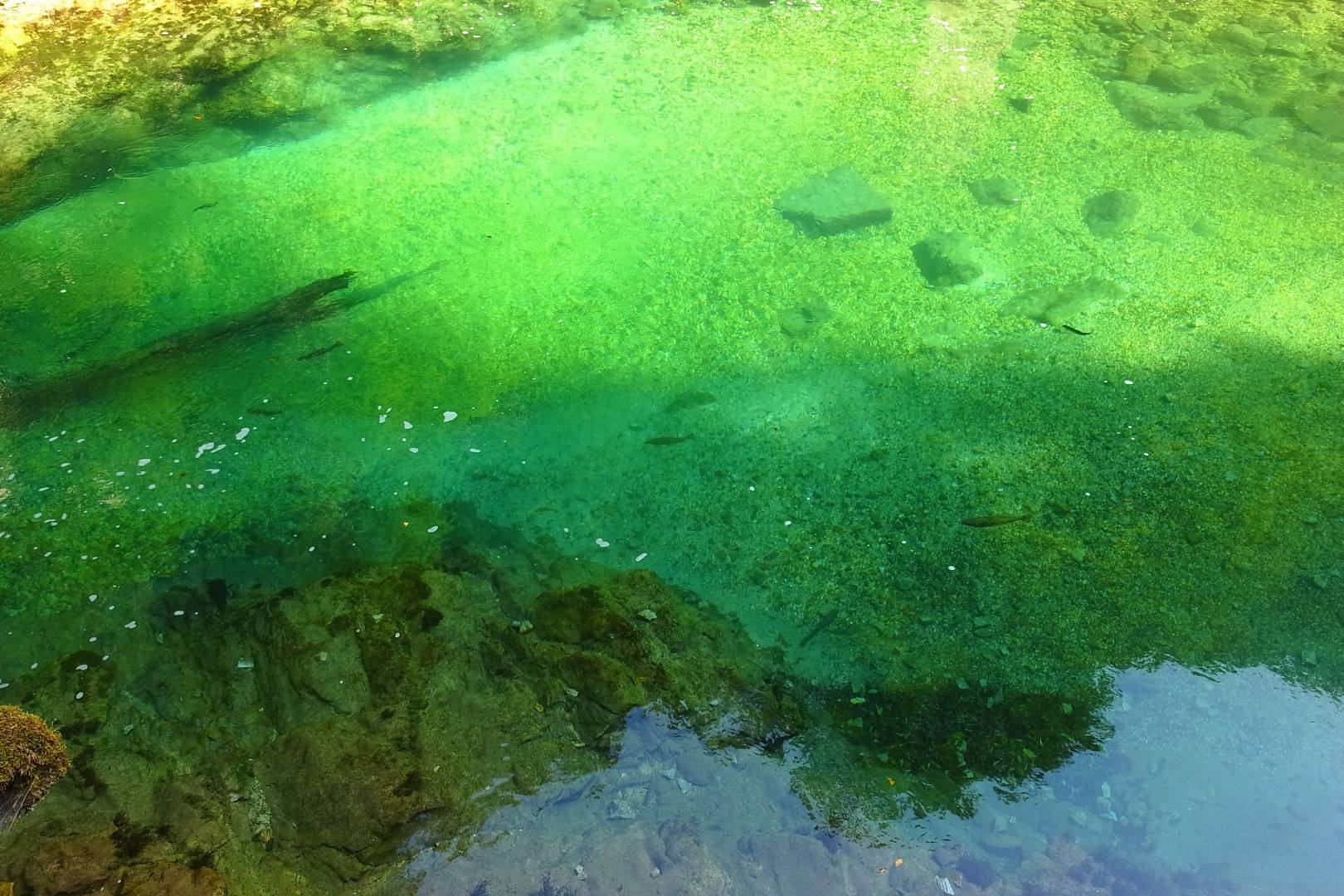


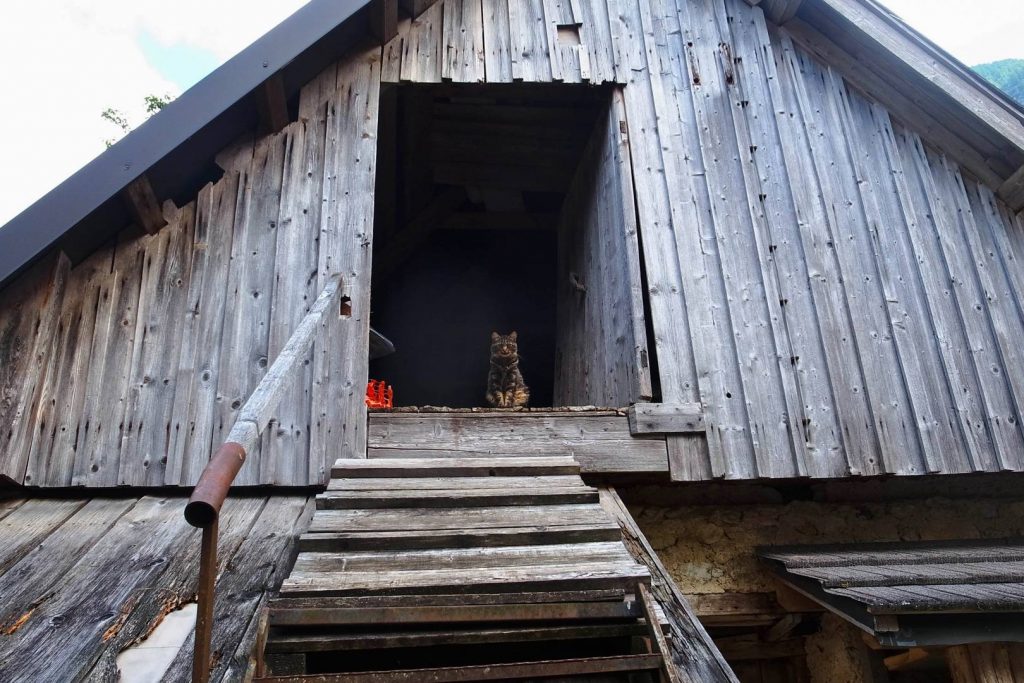





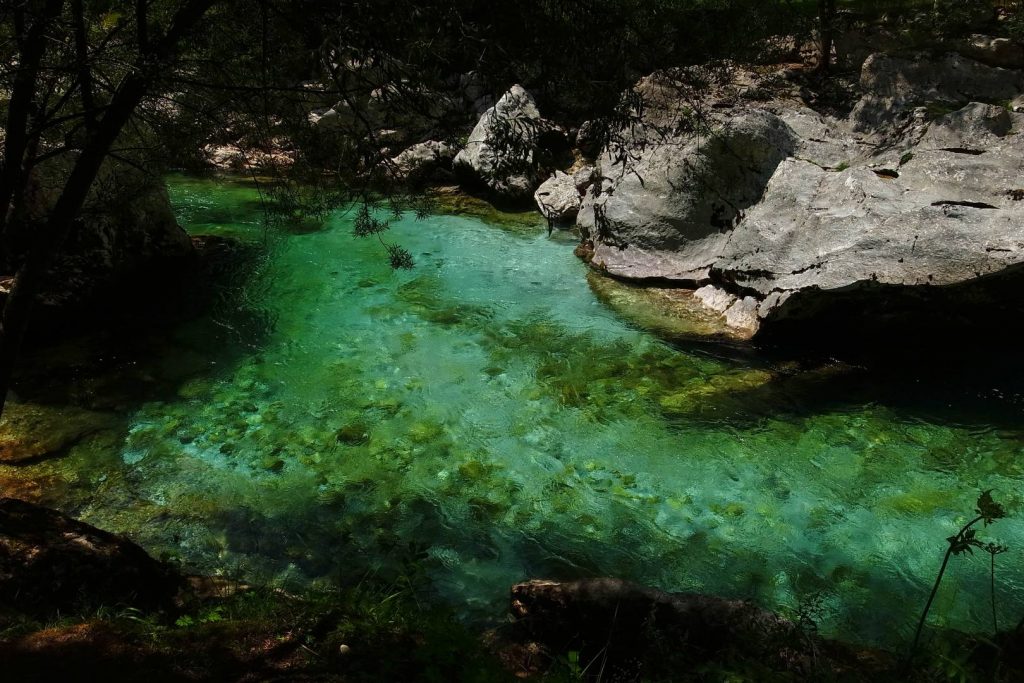

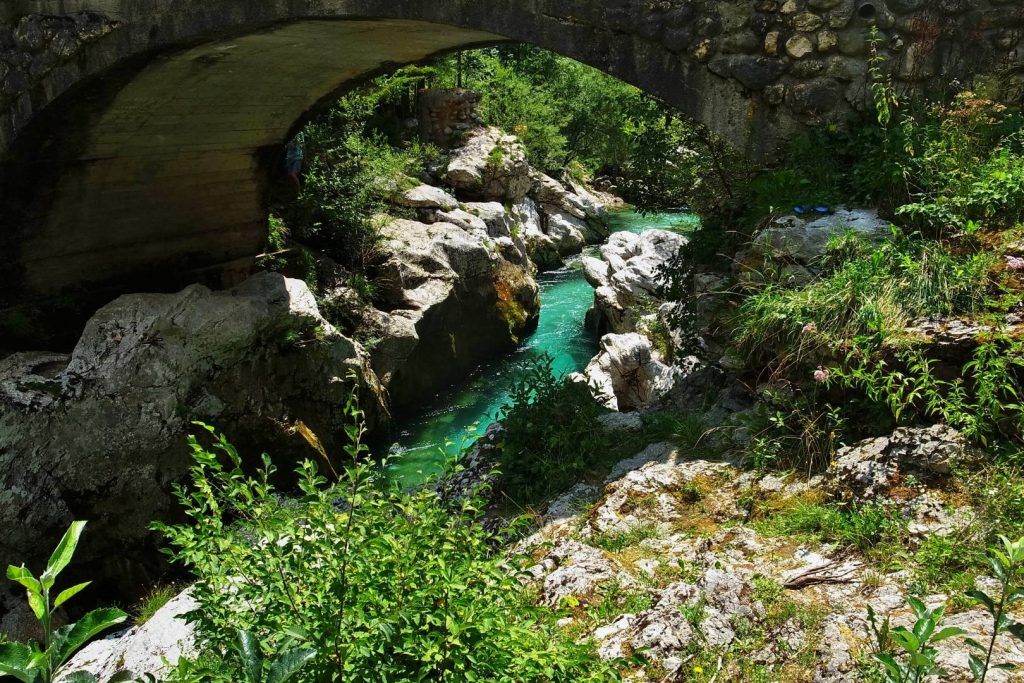










Thanks Brian
I’m sorry I missed your comment. The Alps in Slovenia are truly amazing and I guess we’ll have to back to explore the parts we didn’t go to
Enjoy the evening
Jean
Your usual amazing travelogue. It is wonderful to experience a wonderful unique journey through your great pictures and article. Thanks for sharing your adventures.
The paths at Plitvice are generally very good with boardwalks around the waterfalls. Not a problem.
Thanks Kevin for the information. Plitvice are definitely on the wishlist.
Thanks Dave,
The Slovenian are truly wonderful. I guess i will have to return to Whitby, Staithes and robin hood’s bay with the ricoh some time or other in the future.
Enjoy the weekend
What a wonderful looking place, they have some truly stunning scenes, and the images are superb. That little Ricoh has done you proud, with rich vibrant colours, and breath taking drops – wow.
I cant wait to see what comes next.
Have a great weekend folks.
Hi Jean, lovely photos. I am reminded of Croatia which has many similarities being adjacent. Beautiful clear water and peaceful woods. The cobbled path is like one in Paklenica, it provides a solid surface but it’s so hard on the boots! The Soca trail is one I hope to do sometime.
Thanks Kevin,
Croatia is on our wishlist. We’d like to go to the Ptivilice national park but if the paths are so uneven as those in Slovenia we may well end up on the coast. The Soca trail is magic although some parts of the trail above Trenta is not always well signposted.
Oops I forgot a nice weekend to all at Macfilos
Wonderful compositions and colours. If I was 20 years younger you would have tempted me into tackling some of those walks. Slovenia looks like a great vacation destination regardless of what type of geography you prefer, from beaches to mountains. And that small sensor Ricoh is a remarkable tool.
Thanks Richard,
some walks are strenuous not so much because of the difference in height but because of the very nature of the paths, forcing you to watch your steps. The ricoh is a lovely tool and a remarkably light one.
Lovely photos Jean which give me a twinge or two of familiarity and nostalgia. We stayed in Kranjska Gora in 2005, just before I went to the Middle East to work there. It is on the North side of Triglav Park. I have some dramatic shots of the gorges and ‘slaps’ (waterfalls). I think that I told the story here about how it was assumed that we had been lost up at the ‘slaps’ when we did not turn up for an included dinner at our hotel and went out to a restaurant instead. When we came back from the restaurant the hotel lobby was full of police who had been looking for us as we were last sighted by a German tourist at the ‘slaps’. They were very nice about our ‘transgression’. I also have a lot of shots of alpine pastures and wooden buildings. We also visited Venice from Kranjska Gora with great views of the Dolomites along the way.
William
Thanks William.
We drove through Kranjska Gora on our way to Trenta. The road that leads to Trenta via vrsic path is truly amazing. My wife and I keep Venice for a week holiday in the years to come.
Another superb travelogue from your eye and hand! I don’t understand the following “with no new SD card available, I realised the Ricoh GRD 4 was the only option as a photographic tool”. What’s the link between the two halves of your sentence? Apart from that, the fascination of your pictures and the sheer beauty of some of them make me feel like rushing on to the net and buying a GRD4 somewhere!
Thanks John,
The sd card on the leica failed as I was using the camera. I did not bring any spare ones and the next sd card dealer was some 150 miles from where we stayed so the only option was to use the ricoh with a working sd card. I won’t make the mistake again as the idea was to use the X2 mainly. Concerning the ricoh grd 4, it is a wonderful mature small-sensor camera. If you don’t need large prints and don’t mind the 28mm equivalent it will cover most of your needs (landscapes, macro & street). If you plan to buy a used one there are many GRD3 & 4 for sale they are about the same but the GRD4 is far superior to the 3.
An enlightening travelogue Jean, with superb pictures. The alpine flowers are wonderful. Re #2, can you identify the not so sharp pink flowers? AF latched on to the distant view.
Did you record any of the interiors of the wooden houses on the plateau?
Thanks David,
I did not get inside the buildings as they were private houses and locals tend to refurbish them with all the modern comfort. Regarding the pink flowers, they are what I ‘ve known since youth as alpine rhododendron. I don’t know the exact name but they are members of the rhododendron species. They are poisonous for humans and you are likely to see them over 1500 altitude in the Alps
Thanks Jean. I had wondered if any dwellings offered B&B for example or served as small shops. The trumpets are rhododendron-like in appearance and th
… their dwarfness is typical of alpine stunted growth. (Sorry about my disjointed reply. My tablet released my text prematurely )
There are many rooms or flats to let in Trenta. We usuallly use airbnb to book ahead. I strongly recommend Anze apartments (the new ones) which cater for 2 or 4. The owner is really kind. We even had a present of organic olive oil, some embroidered towel and local specialties from her when we left. It’s ideally situated. if you look for a peaceful and quiet place it is just perfect. There’s only a small shop where they sell excellent bread, wine, local meat and cheese and the basic things you may need (it’s more expensive than supermarkets in town but you save petrol when you go there (the nearest supermarket is in Bovec some 20 km away and it’s far too crowded a place. If you are looking for secluded alpine valleys I also heartily recommend the Valgaudemar valley in France. It was our holiday base with the children summer and winter for years and we have returned there on a kind of pilgrimage and realized we were ageing when going on hikes.
Thanks John,
Julius Kugy was just a doctor that was keen on mountaineering as a few aristocrats in Europe in the 19th century were. The idea of a national park was the idea of the non-aligned communist leader of Yugoslavia. No Ona Bowery when hiking for 6 or 7 hours, just the back pocket of my rucksack. Much safer than your trousers pocket or front walking jacket where the camera is most likely to absorb sweat. I’ve already damaged a camera keeping it warm in winter while crosscountry skiing and haven’t risked the same since. Next trip is Nepal in February but no himalaya this time but just temples and rice terrace in the Kathmandu valley.
Have a nice weekend
Jean
Always a treat to follow you where ever you go. This trip is what I always thought was what theEnglish mean a walking tour. Do you know what that mans statue is all about? Was he the one who pushed for Park status, or a writer that was inspired just being in those beautiful surroundings. Can I ask where are you headed for next? I think that the photos people have of that traveling gnome , in your case should have him in your ONA Bowery with Ricoh or Leica hung on his neck. Would be a good trademark for you.
Thanks David,
this part of the Alps is truly wonderful and not too crowded on condition that you avoid 2 or 3 famous tourist spots. There’s a lot to like in that small ricoh camera once you accept its limitations. Light metering is really tricky and if you’re not careful enough you are likely to end up with overexposed zones which you won’t be able to correct in post. Spot metering is the only option. You also have to accept that large paper prints are a big no no (a 12 by 18 inches print is a maximum)
Enjoy the weekend
Jean
These are stunning images. A most interesting article. I feel I have just had a holiday in the Triglav National Park myself!
Thank you, Jean